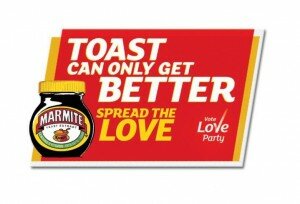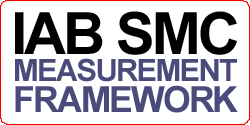By , Sales Group Head, .
 There through choice? Yes. Loyal? Yes. ENGAGED? YES. Social Media users are arguably the most lent forward of all those online, real people logging into their own space online, adding that extra level of potential Engagement for brands, not achievable through other platforms. So, advertisers are embracing this and spending huge amounts of Sponsorship/Engagement budget in Social Media, right? Not really.
There through choice? Yes. Loyal? Yes. ENGAGED? YES. Social Media users are arguably the most lent forward of all those online, real people logging into their own space online, adding that extra level of potential Engagement for brands, not achievable through other platforms. So, advertisers are embracing this and spending huge amounts of Sponsorship/Engagement budget in Social Media, right? Not really.
Social Media is to online, what Cinema is to broadcast, it is the part of the online mix that can really help drive consideration, awareness, propensity etc with a captivated audience, all very valuable measures, some of which seem to have been forgotten in this age of clicks and acquisitions.
I am not saying that online can’t do a fantastic direct response job, we all know it can, this too is an area that needs a marketers attention. But now is the time to undo some of that damage you may have done to your brand equity by placing a standard banner within a social network, and then only measuring success by click through rates. There is a whole depth to its effect that is often ignored.
Vodafone, Unilever, COI, are a few of the brands that understand Social Media is ‘not just for Christmas’ and increasingly brands are getting the idea that these are not impression farms but communities brimful of real people, I am loving the Marmite’ election’ campaign that has just been announced. Real people need to be entertained, enticed, emotionally stimulated, all the things we would expect when paying for a ticket to the Cinema, or for a gig by one of your favourite artists, and like voting for the Tories, Lib Dems or Labour, deciding whether you ‘love it’ or ‘hate it’ is a decision not to be taken lightly.
by Harriet Clarke, communications executive, IAB

Tony Effik
is chief strategy officer at Publics Modem, and became chair of the social media council in November 2009 taking over from Lloyd Salmon, founder of Outside Line. I interviewed Tony to find out his future plans for the council, his feelings on its biggest achievements and his thoughts on the social media industry at the moment.
Why do you think the social media council is so important for the industry?
The social media industry can be a bit like Wild West terrain at times, with new comers occasionally entering into the industry under false pretence of a world full of ‘gold and riches’. Because of this misunderstood perception of the industry it can sometimes attract the wrong type of person. I think it is important for the SMC to work towards demystifying the discipline and achieving transparency, making it easier for new starters. I think this is crucial to maintain growth within the business.
What are your major aims and achievements for the next 12 months?
I am now a quarter of the way through my time as chair and in the first 3 months we have built a solid working structure for the council through establishing clear working groups and appointing ambassadors to manage these groups. Alongside this, we have also completed research into social media budgets which gives us a clearer understanding of where things need to go next and what needs to be done to achieve this. We have also finalised the framework of the practitioner course, a 2 hour session every 5 months aimed at new comers to nurture new talent.
Where would you like to see the council in the next 6-9 months?
Ideally it would be great if in the next 6-9 months the council could substantially aid transparency within the industry. It would be good if the knowledge and the brain power we have amongst us could get shared throughout the business, so more cross industry collaborations could occur. It would also be great to release a standard model that had been created by the SMC.
Why do you feel there was a need to create ambassadors for separate topics?
Social Media is so big, there is no way one person can be an expert at everything. Each individual council member has specialist skills in separate social media areas, and therefore I thought it would be best to unleash this expertise, it is also a good way of giving other members of the council recognition for the investment they make in the council.
How do you plan to further publicise the SMC within the industry?
We need to get the ambassadors out there. Talking, commenting, presenting, writing, and being interviewed. We need to do this in media that moves us out of our comfort zone. That means concentrating on building relationships with a wider range of media, and maintaining current relationships.
What is the council’s biggest achievement so far?
I think it would have to be the release of our recent research study which was conducted by research agency Opinion Matters. It showed the need for clarification over the role of social media and where it should fit within general business models, in order to make the most of the discipline. This research received a substantial amount of coverage within a lot of the major trade titles and online news sites, and was of real use to social media practitioners across the country. We hope to do this every year, and use it as a barometer of social media progress in the UK.
How do you feel the council can help the social media industry grow even further?
I think this can be achieved through creating a shared framework for the industry, promoting best practice and simplifying social media, making it easier to understand and less of a ‘scary’ prospect for those who are less experienced.
We need to create tools, and frameworks that become universal, and become standards. The more standards we create, and the more discipline we engender, the less of a Wild West frontier this all becomes. That will create growth.
by , senior PR and marketing manager, IAB
Following on from Henry’s blog post about Moira and Pam (which I swear to God is true, a friend of a friend who works at the BBC told me) we’re all about the #searchandsocialmedia at the moment. It’s becoming increasingly apparent when brands don’t have any control over (or knowledge of) what people are saying about them online, because it has an inevitable impact on their profile within the search listings.
In fact, in acknowledgment of this occasional short-sightedness, some brands can be quite quick to hop into their competitors search results pages. I feel bad for kicking them when they’re down, but Nestle have fallen victim to this with Greenpeace buying their name on Google (not Bing though, keep up guys!) because it’s a hot social media topic and search volumes have inevitably risen. Their PPC has the search result headline ‘Take a Break’ with the description “Which chocolate company destroys rainforests for palm oil?” Read more…
, new business manager of skive was interviewed by the IAB’s senior PR and marketing manager about creativity within social media and all its touch points. He was asked various questions around this topic, his first being whether he thought social media was more platform or technology based, he addresses this question by mentioning the knowledge gaps within the industry, particularly agency side and that when you are immersed within the industry it is easy to overlook the fact that not everyone has the same level of knowledge about the subject area. He says that brands in general are doing the basics, the well publicised social media platforms such as twitter and facebook are the platforms that brands utilise the most as these are the ones they know most about even though they may not be the greatest channel to talk to their consumers.
Ollerton discusses the need to have a strong marketing strategy in place to make the best use of the social media platforms available in order to generate the best results for the brand. Amy also asks questions regarding social media budgets and whether or not a lack of money has constraints on the campaign, he squashes this comment and says that it is all down to the creativity and that the simplest cheapest ideas can be the most effective ones. Ollerton talks about which brand campaign he thinks is the most creative and how the use of crowd sourcing can sometimes be regarded as lazy marketing however when used well and for the correct brand it can have outstanding results and achieve brand objectives.
Watch the below video to see the full interview…
By Nick Stringer, director of regulatory affairs at the IAB.
At the end of last year I wrote about the top priorities for digital media regulation in 2010. One of which was the industry’s extension of the remit of the Advertising Standards Authority (ASA) into new areas digital media space.
Last week the advertising industry announced this extension. The aim of the proposals is to include areas of non-paid for space, such as marketing communications on advertisers’ own websites and within social media, within the ASA’s existing self-regulatory remit. ‘Traditional’ paid-for digital advertising (such as PPC search marketing, display, video, mobile etc) already falls within remit.
The announcement has been publicly welcomed by the Government and the Conservatives alike. This week, in response to the House of Commons Health Select Committee report on alcohol, the Government welcomed and encouraged “the action being taken by the regulators and industry in reviewing these areas.” And, also this week, speaking at ISBA’s annual conference, Conservative Media Spokesperson, Ed Vaizey, praised the move (he also signalled more government marketing online if the Conservatives win a General Election).
Making as bold and significant an announcement as this with few details to determine the potential impact may not be the ideal strategy, but given the level of recent political concern on marketing to children – particularly from the Conservative Party and Dr Linda Papadopoulos’ report for the Home Office – industry will need to understand why this was done now and to also agree the principle of taking this step.
So let’s start by outlining why this is a significant step for the internet and advertising, and why digital advertisers should welcome the extended self-regulatory rules:
1. We need to deliver the same level of consumer safeguards that exist for paid-for digital media in areas on non paid-for space. Internet users need to trust the media that they’re consuming.
2. We need to ensure that the likes of social media is trusted by marketers as well. This is vital for brands to continue their strong investment in the platform.
3. We’re by no means off the hook: we need to continue to reassure policy-makers that we can self-regulate. This is particularly important in the digital media space where more formal regulation or even (dare I say it) legislation will restrict commercial innovation. Look at the mess we’re potentially facing with the Digital Economy Bill. Justin Pearce in NMA is absolutely right: we’re doing the right thing.
![]()
But – as always – the ‘devil is in the detail’ and these are industry proposals that need to be agreed and ratified by the rule-setting body, the Committee of Advertising Practice (CAP). The IAB also supports public scrutiny of these proposals so that the wider industry (and internet users themselves) can have a say. But the detail is where industry now needs to focus its attention. We have the momentum but, for social media, we need to agree what we consider is ‘in’ and what should be ‘out’. It won’t be easy and the IAB will deploy the greatest thinkers in social media to help us get this right.
By Harriet Clarke, communications executive, IAB

The Internet Advertising Bureau (IAB) is offering one lucky winner the opportunity to shadow senior members of the IAB staff for 1 week between Monday 12th to Friday 16th July. The winner will get the opportunity to attend IAB events and meetings which will give them the chance to make vital contacts within the industry. They will also get to witness the day to day running of the trade body for the digital industry.
In order to win this very exciting placement, the entrant will need to to respond to the below brief which is running in conjunction with the 25th birthday of Levi’s iconic Launderette ad.
The Brief: Using the technology available today, how would you turn the advert above into a creative online campaign, using all available resources (social media, search, mobile, display etc)?
Entrants can respond to the brief in any way they feel appropriate, but finished work should reference the original campaign in some way. Entries should include a written response of between 300 and 500 words which includes:
- Your full name
- The university/college you are currently attending or your current employer
- A written summary of the campaign activity
- An explanation of how your campaign is an evolution from the original version
- An explanation of why your campaign deserves to win
Entrants are also invited to submit supporting graphical work if appropriate.
The entries will be judged by the IAB’s very own marketing director, .
Entries should emailed to
Closing date: 9am on 12th April
Please visit http: to find out information on all aspects of the new media industry and the career opportunities it offers. You can also find information on the Talent Taskforce, an IAB initiative to future proof the online and mobile industry by nurturing young talent.
For full terms and conditions please click here: http://www.iabuk.net/en/1/myspacedigitaltalentcompetition.html
by , new business manager at Skive
When “social media”is mentioned by brands it all too often means “do we need a twitter/facebook page?” as if the answer lies in the platform. Those with any clout realise it’s about leveraging the platforms to achieve your goals as a brand. The exciting thing about social media sites is that they can be seen as blank pages for great creative ideas to run
free. Pumping out offers on twitter/facebook may be functional but it is a drop in the ocean of what can be done if only a little creativity is applied.
On the way in to work today I noticed that they’re opening up a Yo Sushi.
In contrast to their bland product they have made great use of the construction site by putting two social media calls to action on the boards outside the restaurant.

Yo! Sushi
We are invited to follow them on twitter and tweet “London” for a chance to win a meal for 4 on the opening night. Personally I’d rather pay to eat somewhere else, you call me a huge food snob but sushi is meant to be tasty as opposed to just cold – just a thought.
I’m a big fan of cross platform marketing and it doesn’t need to be complicated/expensive. This is a simple, cheap and possibly effective use of outdoor to drive engagement online. As good as this is I think it still misses a trick or two.
1. Yo Sushi ask us to tweet “London” – and that’s it. Who is going to want “London” in their feed except people who tweet random city names for the sheer hilarity of it? They should have said “tweet why you love Yo Sushi” or “tweet Yo Sushi rules for a chance to win!”
2. There’s a similar mechanic for Facebook which falls foul of the same problem.
3. It wouldn’t have cost them much to try out other channels such a flickr. They could have printed a cool image for people to interact with and have their photos taken next to and then got them to upload it to facebook/flickr etc.
Here’s an example of this being done really well by McDonalds:

I get the feeling that Yo Sushi are dipping their toes in the water here and don’t fully understand the integration of offline and social – but it’s a good start.
by Rob Salmon, Director of Digital Marketing, Torchbox. Follow
Back in 1987, BROS’s top quality (in my opinion!) pop song demanded an answer to the question: ‘when will I be famous?’
It is a question that I reckon thousands upon thousands of social media campaigns could ask of their owners.
You could have the best content offering in the whole wide world (we looked at the importance of social media content last time round) but unless you go out and shout about it, there’s a good chance it will remain anonymous.
Back in the late nineties, I was the sponsorship manager on Carling’s Premier League sponsorship. We paid lots for the rights – but then we paid lots more to make the sponsorship famous through PR, advertising, relationship marketing and via a competition website.
In my mind, social media campaigns should be no different. You get the offer up and running. Then you do all you can to make your target market aware of it. ‘Build it and they will come’ might work for a minority of campaigns but for the majority you’ve got to get out there and shout about it. Think Tears for Fears – ‘Shout Shout Let It All Out!’.
So how do you do that? By utilising all the marketing tools you have at your disposal.
Let’s take the example of a Facebook page with the simple objective of growing a community of brand loyalists (yes, I’m sure you’d have more comprehensive objectives that that…)
Advertise: There are hundreds of thousands of Facebook pages. To achieve stand out, consider advertising it with Facebook. It’s not rocket science to say that if your target market is aware of your offering they are far more likely to interact with it.
PR: Get out there and PR the new page. Source relevant blogs, forums etc. Let them know about your offer and what makes it newsworthy.
Your Media Channels: From email newsletters, to website integration to TV commercials, to business cards (surely you’d be better off listing this than a fax number?!) to email sign off. Put it out there. Shout about it.
Do this sort of stuff for a compelling offering and you’re far more likely to trigger a viral spread where friends share with friends who share with friends…
Whatever you think of BROS and their infectious pop songs. There’s one thing you can’t deny. ‘When will I be famous?’ was a massive hit. If you want your social campaign to be similarly successful, it’s worth asking your agency how they are going to make it famous.
PS If you have no idea who BROS are, I’m guessing that it is down to the fact you are lucky enough to be too young to remember them. Hey ho. Fear not. You can view ‘When will I be famous?’ on Youtube.
By Iain MacMillan, RMM and Robin Grant, We Are Social - IAB SMC Ambassadors for Social Media and Customer Service.
Customer service is arguably one of the most intriguing elements of running a successful organisation, given that:
- It can impact on, and be impacted by, every department in the organisation
- Different customers may perceive the same level of customer service quite differently
- In today’s marketplace social technologies mean that everyone can see what you’re doing
We’ve outlined below ten traditional aspects of customer service, and how the emergence and adoption of social technologies has fundamentally changed the game in each.
Read more…
Fleur MD of Pass it On Media was interviewed by IAB’s senior PR and marketing manager, on social media influencers. This 10 minute video covers how to spot a worthwhile influencer, how influencers help campaigns and how they can be detrimental in a PR crisis. Fleur talks through the processes at Pass it On on how to recognize a worthwhile influencer, what tools they use for this and how important it is to keep an influencer fully involved with the campaign and be honest and transparent throughout the whole process in order to gain the best results.
At the end of the video Fleur also mentions her involvement with the IAB social media measurement sub group and how they are currently working towards setting actual usable metrics for the industry.
 There through choice? Yes. Loyal? Yes. ENGAGED? YES. Social Media users are arguably the most lent forward of all those online, real people logging into their own space online, adding that extra level of potential Engagement for brands, not achievable through other platforms. So, advertisers are embracing this and spending huge amounts of Sponsorship/Engagement budget in Social Media, right? Not really.
There through choice? Yes. Loyal? Yes. ENGAGED? YES. Social Media users are arguably the most lent forward of all those online, real people logging into their own space online, adding that extra level of potential Engagement for brands, not achievable through other platforms. So, advertisers are embracing this and spending huge amounts of Sponsorship/Engagement budget in Social Media, right? Not really.




